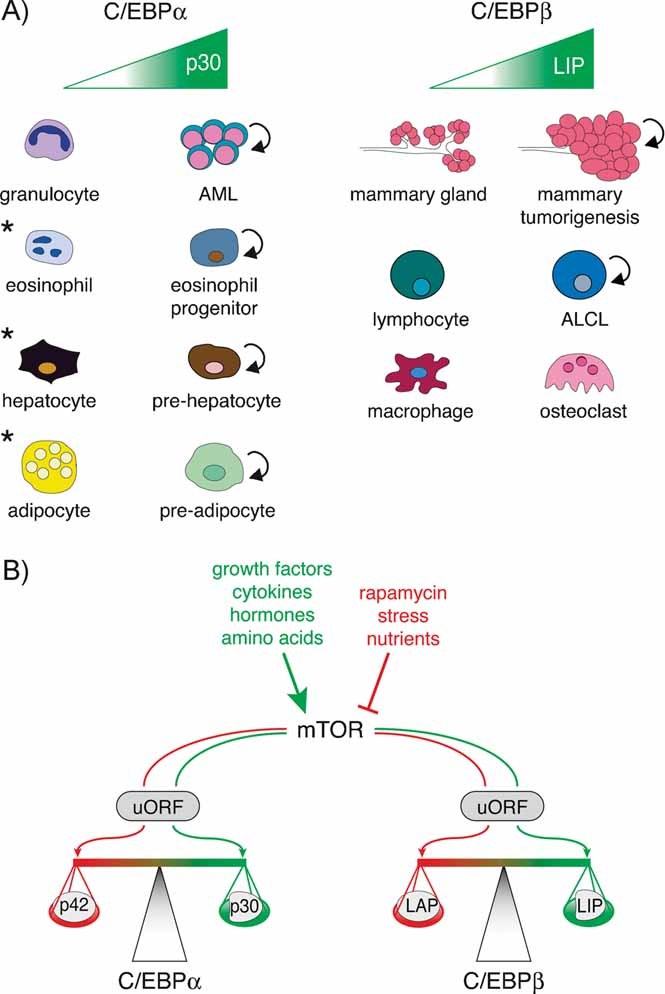Figure 3.

C/EBPα and β isoform expression ratios affect cellular proliferation and differentiation, and are modulated in response to mTOR signaling. A: Several examples of how the C/EBP isoform ratio affects cellular differentiation are illustrated, specifically how an increase in the short isoforms p30 and LIP disrupts proper differentiation. For example, p30 and LIP are overexpressed in several human cancers, including AML and breast cancer, respectively. The truncated isoforms are sufficient to induce lineage commitment of proliferative progenitor cells; however, they are not capable of blocking the cell cycle (indicated with the circular arrow) and inducing terminal differentiation and maturation. * In these cases, similar isoform specific functions have been described for both, C/EBPα and β. B: Environmental signals enhance (green) or repress (red) mTOR kinase activity, resulting in changes in global translational conditions. Changes in the translational status have been shown to affect uORF translation, resulting in changes in C/EBP protein isoform balance. In a good translational status, the C/EBPα and β uORFs may be more frequently translated, shifting the isoform expression ratio toward the truncated C/EBPα (p30) and β (LIP) isoforms (green).
